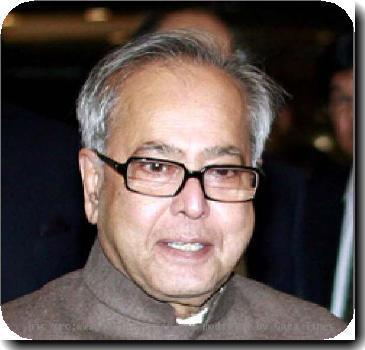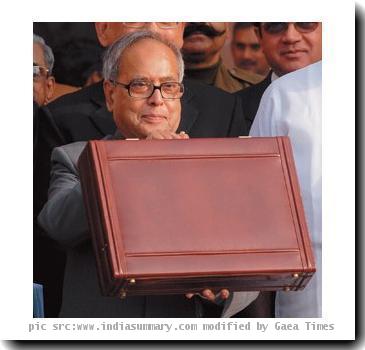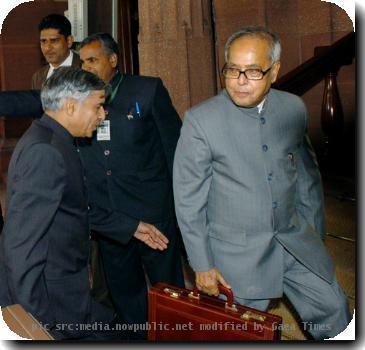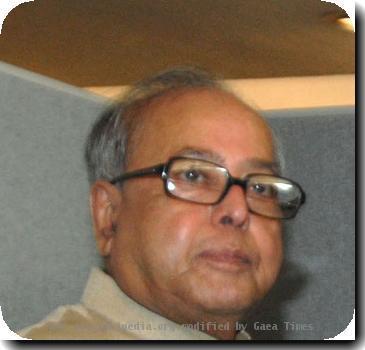India aims to become world’s fastest growing economy by building roads and enriching the poor
By Erika Kinetz, APThursday, March 11, 2010
India aims to be world’s fastest growing economy
MUMBAI, India — Just how fast can India grow? Ask Manal Farooq, who can’t make gloves quickly enough.
“We are facing a major problem,” said Farooq, a senior executive at Marvel Gloves Industries, which produces 3 million pairs of gloves a month, most used in industrial production in India. “Despite importing gloves we are not able to meet demand.”
The run on gloves began five months ago, said Farooq, whose customers include Ford and Nissan.
It’s been driven by a record rebound in manufacturing, spurred in part by government stimulus, which has led India out of the Great Recession faster than many imagined possible.
So abundant is the optimism that India’s Finance Ministry, led by Pranab Mukherjee — not a man given to hyperbole — has made a bold assertion: India could soon overtake China’s growth rates.
“It is possible for India to move into double-digit growth and even become the fastest growing economy in the world within next four years,” the Ministry said as part of an economic survey released in February.
The catch: bridging the chasm between the possible and the probable.
Given the growing productivity of Indian workers and large working age population, it’s certainly possible for India’s economy to speed up, say economists and businesspeople.
But in practice, overtaking China would require fundamental changes in the way India does business. Creaking or nonexistent infrastructure and cumbersome government bureaucracy are drags on businesses large and small. And few think the bureaucratic and political hindrances that make it hard to execute even the best-laid plans will be removed anytime soon.
Also in doubt is how much faster growth will benefit the mass of Indians who’ve seen little or no gain from the country’s much lauded economic rise since liberalization began in the early 1990s.
So far, the economic makeover has worsened income inequality in India, and despite five years of near nine percent growth, over 450 million people struggle by on less than $1.25 a day. A similar problem of widening inequality also blights China, which has grown an average of 9.7 percent a year over the past three decades.
But higher levels of business investment in the past decade have raised profits and wages and in turn produced a large pool of corporate and household savings that was unimaginable in India 10 years ago.
“The productive capacity of the economy has gone up,” said former International Monetary Fund economist Renu Kohli. “My only caveat is that as far as implementation and execution of projects and policies is, India is a slow mover. It doesn’t move at the speed China does.”
Financing isn’t the problem, nor lack of good ideas, she said.
“The constraint lies in procedural issues, land acquisition and the capacity of even private participants to execute those projects without delays,” she said. “For that to change, it’s not entirely clear what a budget or change in policies can bring about.”
India’s top spending priorities in its new budget, released Feb. 26, are social programs and infrastructure. Next fiscal year, the government plans to spend 1.37 trillion rupees ($30 billion) on social programs and 1.7 trillion rupees ($37.9 billion) on infrastructure.
The mix reflects the ruling Congress party’s general approach — ramp up economic growth with pro-market policies and then redistribute the spoils through a massive hodgepodge of social spending, subsidies and employment guarantee programs.
Many say that to sustain growth in the long-run, the nation must do a better job of enriching millions of people at bottom of the heap.
India’s fortunes are less coupled to global markets than export-dependent China’s, but they are linked to the rural economy. Putting more money in the hands of the poor and near-poor has helped bolster domestic demand.
The programs that helped most — farmer loan waivers worth over $15 billion, a massive rural job guarantee program, and higher minimum prices for rice and wheat — were implemented in the run up to last year’s national elections. But they ended up shielding a large part of the economy from the global meltdown, said Himanshu, a professor of economics at Jawaharlal Nehru University in New Delhi, who goes by one name.
Unless rural incomes rise, India could face a bottleneck in domestic demand, said Himanshu.
“Sixty percent of our population is still working in agriculture,” he said. “Even the corporate sector is now saying that for growth what you require is growth at the bottom because that’s your market.”
Giving farmers a more certain future as India’s economy industrializes could also speed progress. Farmers concerned about losing their land in exchange for promises of jobs and one-time cash payments, which quickly get spent, have stopped or slowed the development of mines, power plants, factories and special economic zones.
Naushad Forbes who directs Forbes Marshall Pvt. Ltd., a large Indian manufacturing company, wishes the government would take a more encompassing approach to helping “Bharat,” or the rural poor.
“India’s economy is coupled to ‘Bharat’,” he said. “We have to as a country, as we mature, move away from the budget being a list of giveaways to something more holistic,” he added.
Fixing India’s clogged ports, sweeping power blackouts, inadequate roads and overstretched airports would also be a huge boost to productivity.
Goldman Sachs has estimated that India may need $1.7 trillion over the next decade to double its electricity capacity, increase the length of paved roads by half and substantially expand railway, port, airport and irrigation networks.
Spending that money well could prove challenging. The Delhi School of Economics surveyed 894 infrastructure projects between 1992 and 2009 and found that time overruns ranged from 61 percent of projects in the power sector to nearly 100 percent of railway, health and family welfare projects. Most were caused by government administrative delays.
India’s new budget did please some circles — analysts and investors, who praised Mukherjee for his fiscal discipline and productive spending priorities.
Given the manufacturing boom, the enlightened policymaking and all the road-building that’s going on, why doesn’t Farooq, the glove maker, just ramp up production in India instead of relying on imports to meet rising demand?
“There are certain constraints,” he said. “We need to take a lot of procedures and approvals. We need to take the right land, import the machines, train the people. It will take a long time.”
Besides, he said he’s getting fed up with the number of public holidays in India.
“By the time you start production, you have some festival for a particular religion or caste.”
“Last week only, there were three holidays.”
So where does Farooq get those 1.5 million pairs of imported gloves each month?
Chiefly, China.
Tags: Asia, China, East Asia, Greater China, India, Mumbai, Pranab Mukherjee, South Asia



